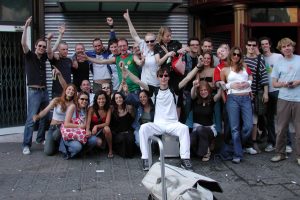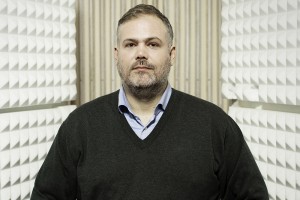Conspiracy in Ficition – Gender & its effects on (pop)culture
It shouldn’t make any difference at all, whether you are a woman or a man – is this binarity really still playing any role when it comes to popular culture? Is the gender of an artist in the first place any criterion when we look at the art?
To get some answers I asked the professional ballet-dancer and director Donna-Mae Burrows (Leipzig, DE) and the notorious new media artist Heidi Hörsturz (Rotterdam, NL) for a conversation in which we also talked about their own art concerning gender and which obviously escalated into extensive suspicions. My name is Ti Omri and this is how it went.
____________
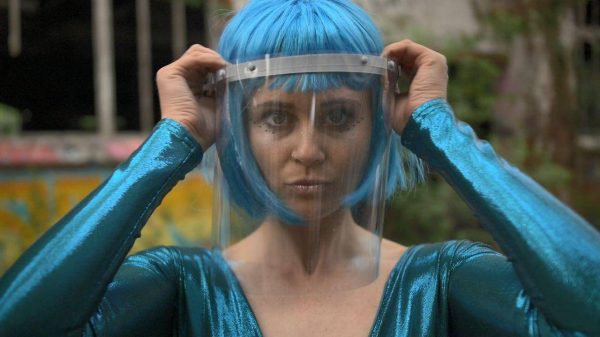
Donna-Mae Burrows in “UCOVIA-19”
DONNA-MAE BURROWS is a freelance dancer, choreographer and teacher based in Leipzig, Germany. She graduated from the Australian Ballet School with an Advanced Diploma of Dance in 2011. In 2012 she began her professional carreer in Europe which included employment with Zurich Ballett, Bayerisches Staatsballett and Leipziger Ballett. Her first major work GN-z11 premiered in 2019 in Lofft theater Leipzig, exploring ideas of feminism and gender. After the premiere she moved into freelancing to continue to pursue and develop her choreographic work along with widen her artsitic experiences. Over the last year she has done a range of work to include dancing in some smaller project based companies, like that of Animi Motus e.V, to work as a guest dancer in state theaters like that of Staatstheater Cottbus. Most recently she has been creating dance for film, working in close partnership with ‘Old Future Film Productions’.
——

Heidi Hörsturz
HEIDI HÖRSTURZ is a new media artist that deals with the various facets of the moving image and sound.
She works in a wide range of computer animations, audiovisual performances and multimedia installations. In her works she examines the influence of new technologies and the social questions that have arisen as a result of digital development. With her approach of art as a medium for exploring social coexistence and as a means of ending the structural suppression of people, fantasies and visions, she takes the media overload of stimuli to the absurd.
After completing her studies at the ArtEZ University of the Arts in the Netherlands she has presented her work worldwide. She performed in venues like ICA London, Multimedia Art Museum Moscow and CultureHub NYC. Her works were shown at FILE Sao Paulo, EMAF, Athens Digital Arts Festival and EYE Amsterdam among others.
—
When in your daily life do you get aware of a person‘s gender, if you do at all?
HEIDI I am aware because a lot of people play with the roles, try to fit into the roles of a gender. You can see that in society. It has a long tradition, these typical roles – what’s typical man and what typical woman – and it all starts when you are young. I mean this typical stuff like blue is the colour for boys and rose is the colour for girls and typical boy-ish or girl-ish behaviour.
DONNA I’m really trying to unlearn a lot of stuff. When I was younger I was much more unconscious that I was categorising people as being a guy or a girl or – gender the world around me. But now I question it if I do it. It’s not so important in some situations and you don’t always neccessarily know how a person portrays itself. So I don’t really judge anyone or assume anything until I neccessarily have to. But if it comes to the dance-environment or the studio-environment it’s very clear that it’s already these kind of gender roles in frames. It becomes very much guy and girl – even though this is changing these days.
Does gender play any role in how you deal with other people?
DONNA Yeah, maybe – unfortunately. It really can change from personality to personality.
HEIDI Yes, I think that’s more about the personality of someone – how you behave towards someone you meet for the first time – then probably you have some kind of clichés you learned as a kid – but of course you try to look at the character of that person and not at the gender.
DONNA Yeah, if I like the person I’m talking to it doesn’t really matter what gender.
HEIDI People, or we, sometimes are these typical roles that we have to play. But I think we don’t have to judge this either – it can also be the personality of someone.
DONNA I am sometimes.
HEIDI I mean when you try to be completely free of these stereotypes –
DONNA – it’s impossible.
HEIDI Yeah, it is impossible and maybe not everything is wrong. You can listen to your feelings and if sometimes your behaviour resembles the typical stereotype then it’s not always a bad thing.
DONNA Yeah. [laughing]
Sometimes mothers tell their daughters to dress up more nicely while they themselves seem to be very busy with their own looks or even worried. Is there a special value to women’s looks?
HEIDI That parents tell you how to dress is the start problem in life – you are somehow in a mental prison how you have to be. And when you are young and want to express yourself freely, you don’t do it because the other one will judge you in a negative way. So the free expression, also of the kids, is getting censored from the beginning because they need to be afraid of the reactions of others. So from early beginnings in life you move into directions you don’t really want to go.
Recently a video called Männerwelten, “Men’s Worlds“, fueled the gender-debate in Germany. One thing it depicts are the clothes women were wearing while they got raped. It’s stated that a common question a woman who became victim of a rape is getting asked is what she was wearing during the rape.
HEIDI I think this is another example for how you express yourself is not the problem – the problem is how people reflect. I think there is no problem with let’s say a woman who is celebrating the look of let’s say a sexy bitch. I think free expression is the most important thing and nobody has the right to discriminate anyone for doing so – or even rape.
I think the question is just completely inappropriate – to ask somebody who got raped what she was wearing.
DONNA It’s fucked up – it shouldn’t even be a question.
HEIDI Of course.
I think we can go with that. The same video addressed the topic that women who – somehow – have a public presence get somewhat intimidating critique addressing their actual work just indirectly but rather focussing on a) their deficiant aptitude as a sexual object or b) their success supposed due to their sufficient aptitude as a sexual object.
DONNA You can’t win! Someone is always going to criticise you from this side or that side. You can’t please everybody. You just have to find what’s true for you and stick with that – and hope the rest of society wakes up.
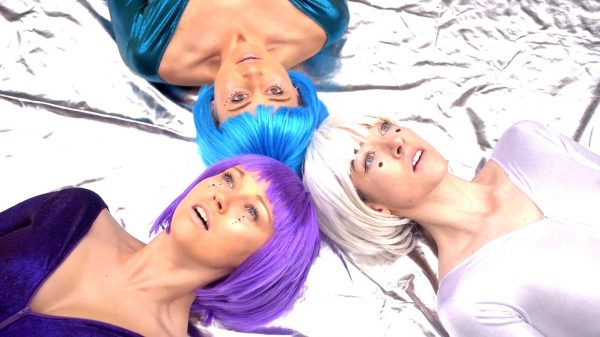
Emily Downs, Kiara Kennedy and Donna-Mae Burrows in UCOVIA-19. Zu sehen unter: vimeo.com/419014722
Donna, in your recent work UCOVIA-19 you show some flatmates who awake as cyborgs in a postpandemic world but are somehow thrown-back to patterns before the pandemic. Have they been female before?
DONNA Yeah, they were female. They are pretty much the same characters I used for a piece I created last year in July: GN-z11. Both pieces explore similar topics regarding the over-sexualisation of women. It’s a kind of a mix between utopia and dystopia. You never really can tell whether something is a frustration or a fantasy – I am sort of trying to blur the line. This goes back to comment on society but I also got extremely frustrated during my career working in ballet-companies because we had such a mould we have to fit into and this works like both ways – for male and female. But I mean I can only talk for myself being a female embodied human.
I just found it extremely limiting, because there are so many rules and ideals of how you should act or be or look. Sometimes I feel like ballet is literally the oppression of women; so historical, so held on to the past. And at some point that became very limiting and I found that really frustrating and I’m still trying to break free of these moules or this shell I’ve been living the majority of my life in because –
HEIDI You stopped – didn’t you?
DONNA Yeah, I moved into freelancing.
HEIDI Ah ok, but actually the roles you played before – I mean you couldn’t choose; you had to play the roles of the director?
DONNA Yeah, you play the role that is given to you – and also within a company’s athmosphere. There is a certain way you must act, a certain way you must dress. I think this is not really said but it’s the expactation of how you should behave and who you should be. However, this is slowly changing….you know, it always used to be only male or female dancers when auditions and stuff were announced… Now a lot of ballet companies state that they are also searching for gender-fluid or non-binary dancers. But I sometimes question how… “true” that is. A lot of these instutions are run by people from a different generation and while I want to believe that they are open for change, I still question how honest they are with these statements, since actions speak louder than words. From my personal experinces the classical world is still so binary and at some point I just felt that I didn’t fit in the given mould. I wanted to express myself differently as a person but I didnt feel I could freely. I knew I just wouldn’t feel accepted and didnt want to fight for my validation, so I made the choice to leave.
HEIDI But what did you mean when you said it didn’t feel true. Why then are they doing it? Do they want to have the image –
DONNA I feel like some places want to have this image of being open and current. – They want to present themselves as being open, as having space for more different and diverse people. But the end of the day, some people running this stuff are from a different generation which still hold different values – – this is not everywhere obviously, but at some places. There’s a lot of work to be done to change values that have been taught to us from a young age. Change doesn’t happen just over night, it’s a process. People can very easily publize themselves or their company as being open to all genders, but what choices do they make when choosing someone in an audition or casting…? Do they live up to their statements of accepting everyone, or do they find excuses to continue to choose binary bodies. I don’t want to be pessimistic with the situation, I do believe it is changing. However for every dance company this is going to be changing at a different pace. It is all dependant on the oppinions of the people “at the top”, the directors, ballet masters, people with power who are making the final decisions in the end.
When I was watching UCOVIA-19 I got the impression that it was depicting women as sexualised products – one of them getting sexually educated by the others. Is your art consciously referring on the experiences you made as a ballet-dancer or on the experiences as a woman in general?
DONNA I would say my piece refers more to what society teaches to women in general as oppose to directly referencing ballet. Ballet can be a very sexual artform, although when young, one is not usually aware of this.
Heidi, at the end of one of your works the audience gets exposed to an enervating, never-ending baby-scream. And at the beginning of your recent video “Do You Like Me?” there are five women-figures depicted with the typical ideal features like high cheek-bones and middle sized breasts shown in frames that could be smartphones. In the next shot you can see them posing. The centered figure is the image from the scene before but the others display …smaller heads and very big breasts. So, you do refer on the idealised female body but do you do so also in terms of reproduction?
HEIDI Yes, sure. It’s a kind of experiment with stereotypes in digital art and how you present them as digital avatars. It’s an exaggeration of the stereotypes and for me presenting them in this small extreme way is more a beauty in the dystopian. So, at the dystopian side the figures resemble characters being pressed in this form by society but at the same time I’m really fascinated to push these “ideals” in a more “ideal” form. It is also an experiment on how to trigger different associations with characters – I also see a beauty in it.
Though that might not sound so important at the moment I think we should be careful that this entire gender discussion doesn’t turn in a direction we don’t want. – That all the way we have to be aware that we don’t fit into gender-roles. That would mean that in the end you still wouldn’t be free in what you are because the new –
– because you are trying to not be something?
BOTH Yes.
HEIDI On one hand we live in an over-sexualized world but at the same time it’s still prude. I think we shouldn’t forget this all could be a nice thing instead. For instance if we take pornography –
Ah I wanted to talk about that!
HEIDI Super-sexual isn’t at the same time sexism. You can make a porno in which a woman is suppressed by a man that is not automatically sexistic. There is also a huge range of fetishes and role-plays and – it doesn’t matter whether it’s a porno or an art-piece; what you see is not the problem but the reflection of the one who sees it. So I think it’s more important that we reflect on what we see to understand what’s fiction and what’s a role and to be aware that we all are in these roles than to judge about showing this kind of stuff.
I recently watched an interview with two porno-perfomers – do you say “performers”, Donna?
DONNA …pornstars!
– pornstars of a feministic porno-collective called MEOW MEOW and according them pornography is a capitalistic product that it isn’t making up these desires shown but just fulfills the sexual desires that are there. – For every little nishe there is a fitting porno and as we live in a society that is rassistic and sexistic, rassism and sexism will be resembled in pornography. But maybe those desires we have are designed by what we see?
HEIDI Our whole personality is designed by what surrounds us. Of course this is also the mass-media and the whole culture – it forms our way of thinking.
But is art in any way different from pornography?
HEIDI Depends! I think here we come back to the point of reflection.
I still think that art is in a way more reflective but on the other hand displaying what is existing in a society.
HEIDI Of course – I mean it’s a reflection of the society and also forms the society. It also depends on what kind of art – whether it’s conceptual art with one specific topic – or whether it’s just the expression that derives from your feelings and emotions.

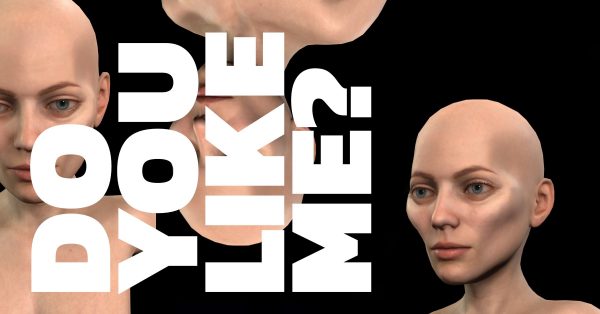
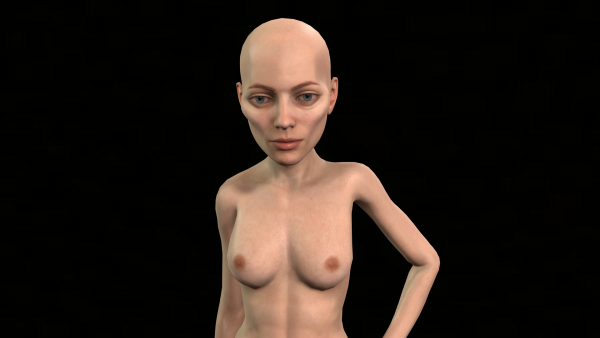
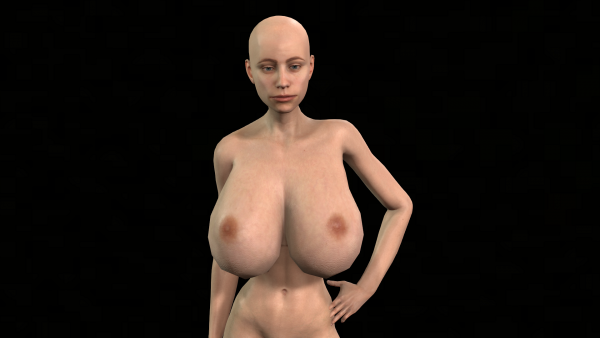
Do You Like Me? von Heidi Hörsturz
Is your art conceptual?
HEIDI I would say it’s both – it’s conceptual and personal. It’s a conception and a free expression. There are different ways to start making an art piece. If you have an image in your mind, if there is this concrete idea and you want to realise it or you want to give a special feeling to someone – then it’s more –
conceptual.
BOTH Yes.
HEIDI And in my case it’s both – sometimes the art is already there and I will reflect it later and sometimes I have a concrete idea and want to realise it.
Another thing I find interesting are advertisements.
HEIDI Ah yeah. There is one thing you were talking about I wanted to add to – like how much money is behind it. I think this is a really important thing. It’s such a huge business you create for each product. Everything is designed for men and for women. This really goes into vast dimensions. I mean, how absurd is it that you can buy a shampoo for men and a shampoo for women – that’s of course the interest of a capitalistic system.
Maybe there will be a queer-shampoo, too. Like Donna said at the beginning: Things are changing. There is a kind of paradigm-shift that slowly moves away from heteronormativity that claims a binarity in gender but also says that everything that is not hetero is deviant. This shift is also recognisable in pop-art in terms that what once was defined as deviant is now becoming “normality” – that queerness becomes normality – so what once made some artists “anormal” and wasn’t quite serving their career now can work as a catalyst for succes. – Then it’s still the question whether it’s really the cause of their success that they display this shift in a way –
HEIDI So it’s a commercial hype –
Yeah, maybe and maybe also feminism can be used as a commercial hype.
HEIDI It is. But that doesn’t make the thing itself bad I think. Always – if something is getting popular the capitalism –
– will jump on it.
HEIDI Yeah – grabs it and makes money from it. Unfortunately this happens with every ethical discussion in society. But still it’s good that it is popular or that people talk about it.
DONNA moneymoneymoney.
Reminds me of the song Geld, “Money“, by K.I.Z. – one part, bad translation, reads: “That I hate fags is something I liked to say in earlier days – today I won’t otherwise I can forget about the ad-contract.”
Now we are talking about gender but – regarding racism for instance; there is art that from the view we have today is racistic or uses racistic terms and because of that is now forbidden, censored, or just not so popular anymore. In a way art might be more reflective than let’s say ads but the artist is also always in a system – you can reflect on that but you won’t ever get out of it. I think that’s sometimes not being considered if people talk about art, all media.
HEIDI I don’t see a reason to censor this kind of stuff because – it’s the same thing I said at the beginning: It’s the reflection on how you look at this kind of stuff that is important and I think everything should be allowed here. Of course not physicly – so, you cannot kill people and then it’s art – but if it’s only fiction, everything should be ok. It’s about the reflection; you have to understand that it’s a fiction what you see or that it has a message. This total political correctness that you cannot say this or that in an art piece, or drag or music – whatever – is a super poor attempt to change something. But it’s not about changing a word in an art piece. Of course if you talk to people in your “real life” – then I agree. There you should be careful not to discriminate people with what you say but I think –
As long as something has written “fiction” on it it’s ok.
HEIDI Yes. We really have to take care that it stays like this. If we look back we can also compare this to Entartete Kunst, “Degenerate Art”.
Yes.
HEIDI So, do we want that? A society that removes paintings because they are not gender-neutral or something – you know what I mean? Maybe that’s a pessimistic view but –
No, I understand.
HEIDI So that’s not what we want. So we have to think critical and reflect art.
DONNA We need critical thinking and raise a new generation of critical thinkers. Because I feel sometimes people just consume stuff without thought these days you know? In this digital world everything is so fast and –
– I think that’s actually the problem. It gets more and more difficult to define what is factual and what fictional in these days – because you are all the time –
BOTH Yes.
– bombed with fiction and I mean we – or I already sometimes have trouble to define what is factual and what fictional – also when reading texts. This is actually not so easy. How can you train children to pay any attention to it?
HEIDI Ja… Ja.
Also when it comes to advertisements – I think Heidi is also referring on this in her art: When we show pictures of us in social media; this is a kind of fiction. We choose what we show.
And when it comes to art – for instance when artists propose their art and they use their own image for it, the perception of the gender of that person’s image is sometimes taken into the art.
HEIDI Yes, it’s automatically part of it.
Ah. Ok. That would have been the question.
HEIDI Yeah, because we live in a society and everything that surrounds us is part of it. So we don’t just like the painting – we also like the artist who painted it.
Every special form of art and what’s behind it is also some kind of an image – like every other product in the capitalistic system. I’d say we don’t just sell products, we sell images and I think this is the same in the art world. This is the star mentality.
If we don’t just like the art but also the artist and with this also the artist’s gender, does the art then have to fit to the gender of the artist?
HEIDI If you play with female stereotypes and the mainstream-expectations of a female character your art certainly gets more acception or is more “legitimate” if you are female. – Of course it’s a bit sad, that it makes a difference. –
– But it does. Also race does make a difference. It is like that.
BOTH Yah.
So when it comes to serve the interests of the market art isn’t so different from pornography?
HEIDI No, it’s not just art and pornography. It’s concerning the entire society. It isn’t limited to some niches in society. Even the critical side is part of it – and has to learn. Like you said in the beginning, Donna, that you try to change yourself and be more aware of this – so it’s a learning process. And there are no borders.
DONNA Yeah. But sometimes I wonder how I would be if I hadn’t have had my experiences with ballet. Because that definitely shaped me to where I am today and I am still not completely free of it. When I’m freelancing and creating stuff myself I have full artistic freedom in that side but I’m still doing some theatre work and when it’s coming to be employed in an institution there is still this mould that I have to come back to. So I’m always a bit torn between how much is truly me and how much has been formed due to my experience. Ya, to some questions you don’t find an answer – but it’s nice to reflect on and slowly move to somewhere else.
___________________
HEIDI HÖRSTURZ
www.heidihoersturz.com
instagram: @heidi.horsturz
___________________
DONNA MAE-BURROWS
instagram: @__dmae__
___________________
This talk was hosted by Ti Omri
Ti Omri is a painter who studied autonomous art in the Netherlands but lately moved back to the beautiful city of Leipzig, DE, to finish her M.A. in German literature and linguistics. Understandably questions regarding reception, representation, fiction and institutionalisation are very popular in her life and because discussing questions is fun she does so – sometimes with other artists.








